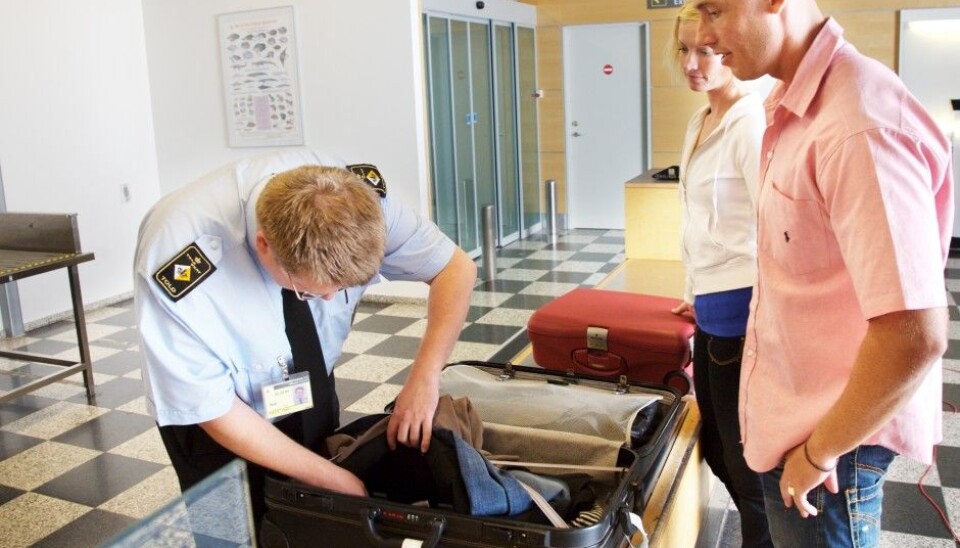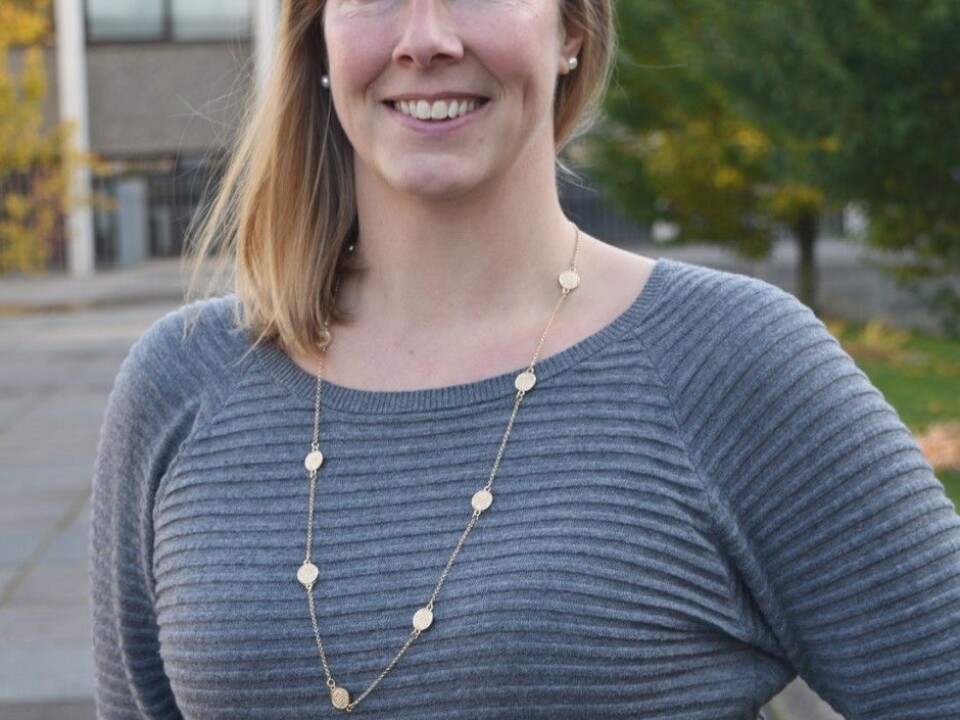This article was produced and financed by University of Stavanger

Are we overdoing aviation security?
Despite a seemingly low level of risk, we spend lots of time and money on screening air passengers and luggage in Norway. Has fear gained the upper hand?
The attacks on the World Trade Centre in New York on 11 September 2001 made a huge impression on the entire world. Not in our worst nightmares had we imagined that planes would be used as weapons in carrying out acts of terrorism.
The terrorists made it clear to us all that airport security was inadequate.
This resulted in drastic changes to security procedures. The EU introduced massive, detailed regulations, and as a member of the EEA, Norway complied with these.
From Heathrow to Båtsfjord
"The regulations were designed for large international airports like Heathrow and Charles de Gaulle", says Elise Anonby Olsvik at Senter for risikostyring og samfunnssikkerhet (the Centre for Risk Management and Societal Safety [SEROS]) at the University of Stavanger.

"There were big challenges when the same regulations were introduced at airports such as Båtsfjord and Berlevåg", she adds.
In her recent doctoral thesis, she has looked at the consequences of introducing these extensive regulations on Norwegian aviation.
The system is called one-stop-security, and it means that when someone has been security-checked they do not have to be checked anywhere else in Europe. This means that if you board a plane in Sandnessjøen, you can then travel to London and Paris without being checked again.
All airports are gateways into the system and the security check must be just as good everywhere, regardless of the number of passengers, departures and employees.
Work changes
As passengers, we noticed the new security checks overnight. But what about the airport personnel?
Olsvik carried out fieldwork in three different-sized Norwegian airports. She witnessed how the introduction of rigid, detailed regulations that were not adapted for local situations impacted on the employees' normal workday. Tasks were largely decided in advance and were described in detail, while the employees' local expertise and experience was ignored.
"They were supposed to enforce rules and procedures that were not particularly well suited and which, at times, seemed to be ill-fit. Several also told me that certain parts of their job seemed meaningless and the only way to "survive" was to stop thinking. How does this impact on aviation security?
One of the most important security measures we have are alert staff who feel that their jobs make sense", says Olsvik.
The biggest challenges were in the smallest airports. Gardermoen was the only airport that could accommodate these regulations with regard to buildings and the number of employees.
In 2009, there were 12,000 employees with specialised work tasks at Gardermoen. The smaller the airport, the more tasks the individual employee must assume responsibility for. Of the 46 Norwegian airports, over half of these are considered to be small airports, i.e. 3-4 departures per day and 20-30 employees.
Old-fashioned regulations
Are we addressing the type of risk to which Norwegian aviation is vulnerable and exposed? No, according to Olsvik.
"We have no proof that the NOK 1.2 billion is being spent wisely."
Studies that highlight this theme are lacking, and not enough people are questioning the effectiveness and justification of how this money is spent. The debate has not changed since Olsvik started working on her PhD in 2008.
She criticises an outdated and retrospective method of regulating aviation security. While in other industries, people are working towards less micro-management in documenting the effectiveness of measures, we are going backwards in relation to terrorism. New rules are being introduced as incidents occur.
Olsvik characterises the regulations as old-fashioned and rigid and says they are more reminiscent of Norwegian regulations of the 1960s. The symbolism of terror is so strong that anti-terrorism measures trump everything. Society needs to be managed, and measures are accepted whose effectiveness cannot necessarily be documented.
"We should dare to question whether we are overdoing our security regime and how effective it is in a Norwegian context", says Olsvik.
Retaining autonomy
Not all EEA countries opted for the same solution as Norway. Iceland chose to make a distinction between national and international air travel for two airports that are located at a distance from each other. Olsvik compared the different choices that Iceland and Norway made.
"For Iceland, it was important to adapt the security measures to their own conditions. They applied for and obtained an exemption from the EU regulations at their national airports", says Olsvik.
Keflavik airport in Reykjavik handles all international traffic and has introduced full EU regulations. There are less extensive security measures in the national airports.
The Icelandic police is responsible for carrying out risk assessments and putting measures in place as required. For example, Icelandic passengers do not have to go through a security check before boarding a plane.
"The Icelandic authorities feel that Iceland is not a particularly attractive terrorist target and considered the EU regulations to be unsuitable for their domestic flights", says Olsvik.
This benefits of the exemption are considered to be so large that Iceland is willing to take the chance on retaining its autonomy.
Axe attack
In Iceland, mentally unstable people are considered to be a greater threat than organised acts of terrorism. This was exactly what happened in Norway in 2004. A man whose application for asylum had been rejected attacked Kato Air pilots with an axe and almost caused a crash.
Olsvik compares this with an incident in New Zealand where an asylum seeker attacked the pilots with a knife. The authorities contacted Norway to learn from their experience after the Kato Air incident. New Zealand also did not see the necessity to introduce regulations that were similar to the EU regulations. They decided instead to implement security measures such as reinforced cockpit doors to prevent such incidents.
Lack of reasons
Security at Norwegian airports has improved significantly since 9/11. Olsvik fully appreciates the advantages of metal detectors, the ban on liquids and the fact that bags are taken off the plane if the owner does not show up. However, she asks why Norway chose to introduce the complete EU model without any discussion.
Olsvik has also interviewed key personnel in Norwegian aviation from Samferdselsdepartementet (the Ministry of Transport and Communications), Luftfartstilsynet (the Norwegian Civil Aviation Authority), Avinor (the company responsible for the operation of Norwegian airports) and trade unions for aviation personnel.
She does not think that there were good enough reasons for introducing the regulations. Norwegian authorities argue that being a part of one-stop-security is an advantage and that all passengers should have the right to the same security when travelling.
"I am questioning what seems to be an “either-or” attitude: either inadequate security measures or the full EU package. The Norwegian arguments do not hold up when we see how New Zealand and Iceland deal with these issues", says Olsvik.
-------------------------------------
Read the Norwegian version of this article at forskning.no






























